How to Get Rid of Mice in Your House: The Complete Guide
Mice can be a real nuisance, especially when they start invading your home. If you’ve been dealing with mouse activity, you know just how frustrating it can be. Not to mention, mice can also be dangerous if they start chewing on wires or spreading disease.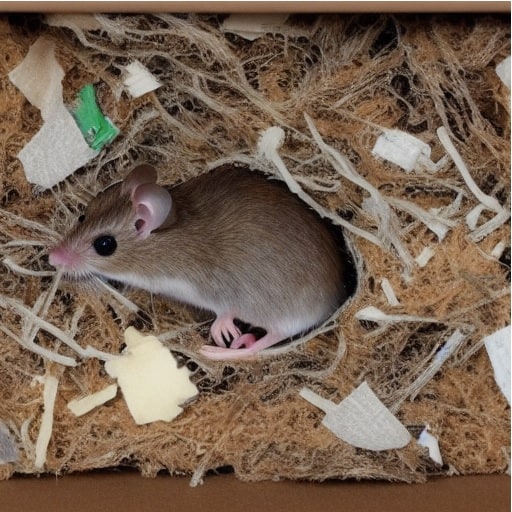
Adult mice are only about five to seven inches long, including their tail. But don’t let their size fool you – mice can cause a lot of damage. Mice also spread diseases like salmonella and hantavirus, so it’s important to get rid of them.
Follow the steps below to get rid of mice in your walls, attic, and other spots in your home.
2. Confirm There’s an Infestation
Looking for professional mouse control services for your home?
What Attracts Mice to Your House?
There are a few things that attract mice to your home:
Food & Water
Mice are attracted to food sources so, if you have food out in the open, even crumbs, it’s more likely that mice will be drawn to your home. Water is not as important to mice because they do not need a lot of water. But, in droughts and other dry periods, they may try to get inside of your house to access some water.
Warmth
Mice like warm places to nest. So, when we start getting into October and November, mice start finding their way into houses, garages, and sheds.
Clutter
Mice like to nest in cluttered areas because clutter provides more places to hide. For the most part, mice do not like being out in the open. Reducing clutter will make your house less attractive to mice.
Nesting Materials
Mice like to nest in soft comfy materials such as paper (including old newspapers), cardboard, insulation, vegetation, and all kinds of fabrics. Store items in plastic bins or metal file cabinets. Remember that mice like pet food, so keep that in a tight plastic container as well.
The nest is where the newborn mice will live for the first three weeks of their life – so the adult mice want to make the mouse nest as safe and comfortable as possible. So if you have these materials lying around, getting rid of them or putting materials in a secure container would make your house less friendly to mice.
Steps to Get Rid of Mice
1. Identify Entry Points
The first step in getting rid of mice is to identify where they are coming into your home.
Mice can, and will, squeeze through tiny cracks and holes to get inside. Once you know where they are coming in, you can block those openings with copper mesh, steel wool, or caulk.
Mice can flatten their bodies to fit into spaces as small as a dime, so be sure to check both big and small openings.
Be sure to look where utilities go into the house and make sure the entry holes are sealed up tight. 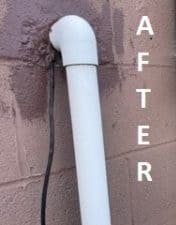
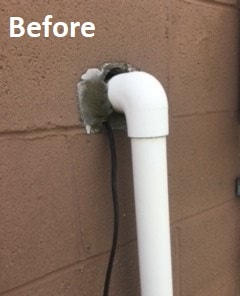
We have found mouse nests in attics, basements, sheds, bedroom drawers (Yikes!), behind appliances, in boxes, under the hoods of cars, and many other places!
Mouse nests are usually located where the mice feel safe and have access to food, water, and warmth.
Now that we know what attracts mice to your home, let’s talk about how to get rid of them!
Need help getting rid of mice?
2. Confirm There’s an Infestation
If you think you might have a house mouse infestation, the first step is to confirm it. Mice are pretty small and mouse nests can be hard to find – so they’re not always easy to spot.
Mouse nests can be inside walls or other places that you cannot access. Also, keep in mind that the mouse nest may not be inside your house – the mice may be outside and just come in and out in search of food or water. However, even if you can’t find a mouse nest, there are some telltale signs that you have mice:
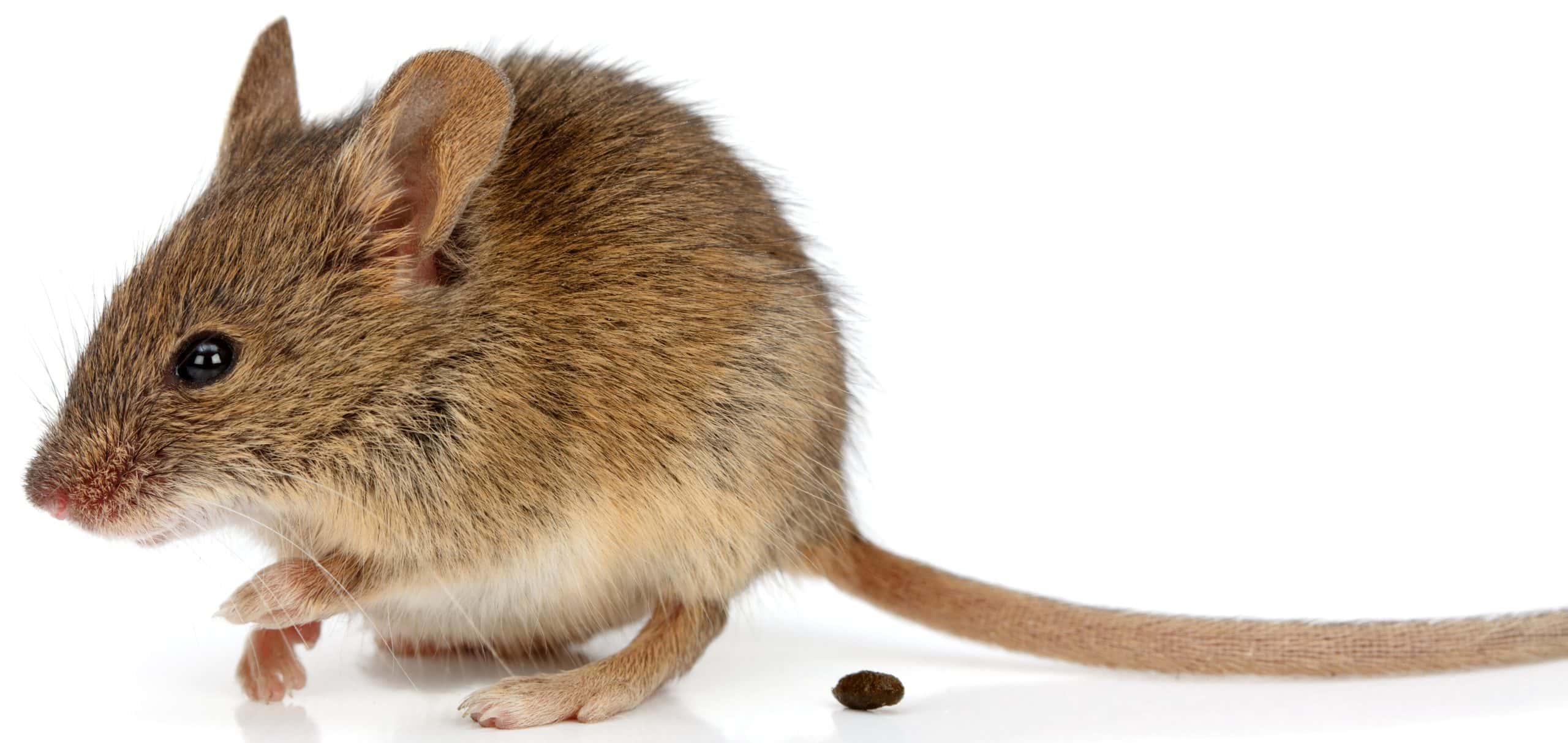
- Mouse droppings: If you see small, black pellets in your cupboards or around your food, or other places, you probably have a mouse problem.
- Strange or unfamiliar noises: Mice make strange or unfamiliar noises – like scratching and squeaking noises. If you hear scratching or squeaking noises coming from your walls or ceilings, it’s likely you have a mouse problem.
- Damage: If you see teeth marks on food packaging, furniture, baseboards, chewed-up boxes, wire, or papers, then that is a clue that you might have a mouse infestation.
- Grease marks on the walls: Dirty wall markings along your walls or baseboards could be a sign of mice, as they like to run along perimeters.
3. Choose a Method of Mouse Removal
The sooner you get rid of the mice, the better. If you delay for too long, the mouse population will just increase.
There are several ways to approach house mouse control and here are some of the best ways to get rid of mice in your house:
Trapping
Trapping is one of the most popular DIY methods for getting rid of mice. There are all sorts of different traps available, from traditional snap traps to live traps.
Rodent Bait Stations
Another popular method for getting rid of mice is using bait stations. There are all sorts of different rodent baits available on the market. Just be sure to use them safely and according to the instructions on the label. The bait is a Pesticide and can harm people and animals.
The rodent baits MUST be in a container made for this use – this means you cannot just throw bait blocks under your shed or other locations.
Follow these tips to kill mice with rodent baits:
- Place in an area where children and pets can’t reach them.
- Place the bait boxes in the vicinity of the mouse activity and along the walls.
- Follow the label instructions on the package and dispose of the bodies safely.
The potential downside to using rodent baits is that when mice (or rats) feed on the bait stations, the dead rodents might die inside your house.
Glue Boards
Glue boards are an option to catch mice without using bait blocks (which contain rodenticides) or snap traps (which can hurt if your finger gets snapped). Glue boards provide effective control for newborn mice and smaller/weaker house mice. However, stronger mice are sometimes strong enough to pull themselves off of the glue board.
Repellents
Repellents can be sprayed around the perimeter of your home to prevent or deter the mice. Some repellents can be used inside cabinets and drawers, but you may not like the odor. Read the instructions on the label carefully before using the product.
Repellents can help. But if you already have mice in your house, you will need additional methods to get rid of them.
4. Place Mouse Traps
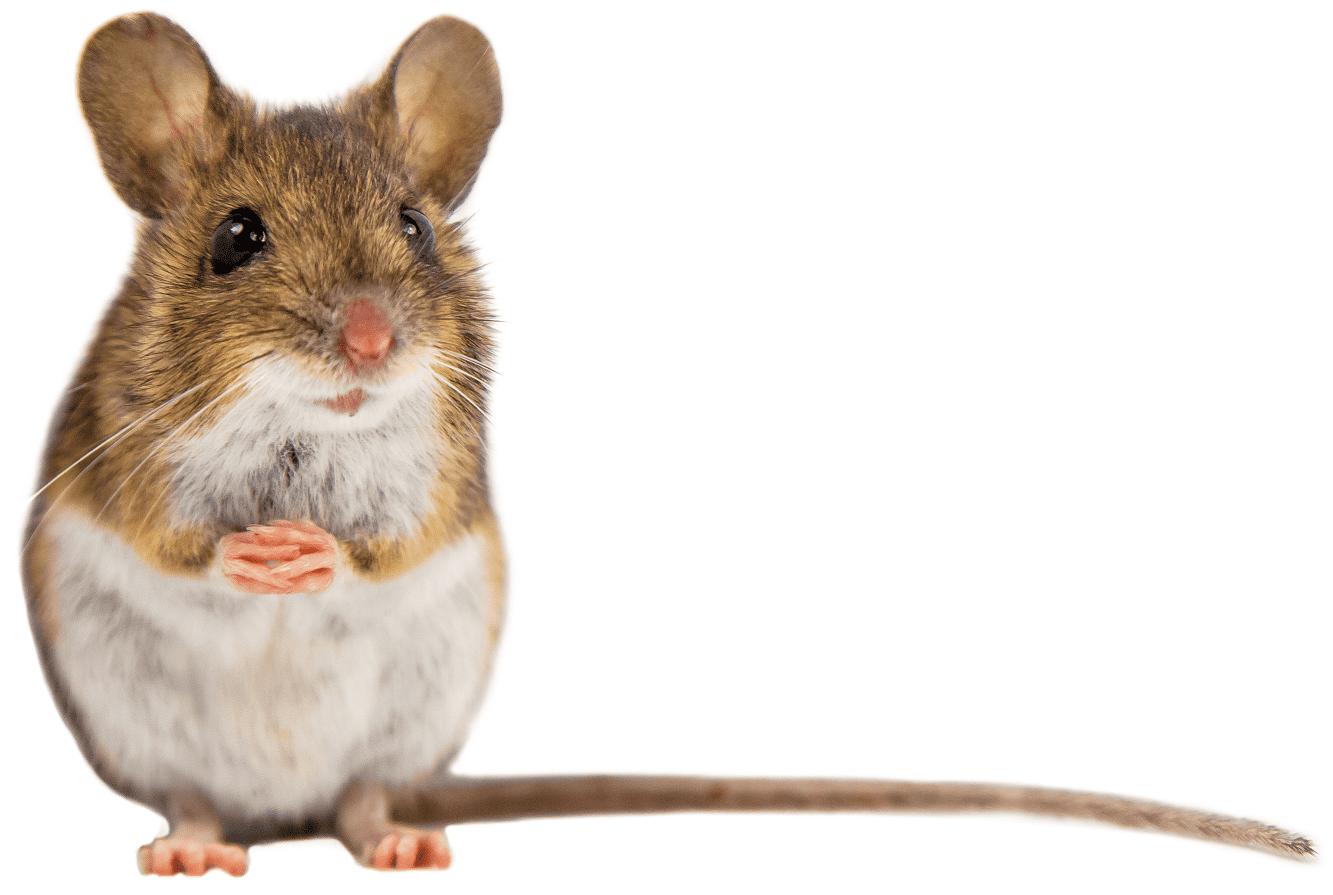 The placement of your mouse traps is important for their effectiveness. Mice are creatures of habit and tend to travel along the same routes every day. So, it’s important to place your traps in these high-traffic areas. Mice seldom venture more than 10 feet from their nests, so focus your efforts on these areas.
The placement of your mouse traps is important for their effectiveness. Mice are creatures of habit and tend to travel along the same routes every day. So, it’s important to place your traps in these high-traffic areas. Mice seldom venture more than 10 feet from their nests, so focus your efforts on these areas.
- Place traps along areas of the wall’s base that could serve as passageways for mice.
- Add traps to other areas of your house where mice may hide, like behind the stove or in cabinets where you store food.
- Use multiple traps; more than you think you need. For example, if you have a wall where you see mouse droppings, place a trap every 4-5 feet along that wall.
- Wear gloves. Mice can detect human scent on a trap and may avoid it, and it’s also good to wear gloves for hygiene purposes.
Smear peanut butter, soft cheese, or soft dog or cat food on the trigger of the trap.
The most important thing to remember when placing traps is to be patient. Mice are wary of changes and it might take them a few days to adjust to the new traps. But, if you’re persistent, you will eventually catch them!
Are Mouse Traps Safe for Pets?
The answer is yes – as long as you use them properly.
The best way to use mouse traps with pets is to place the traps in areas that your pet cannot access such as the sills in your basement, behind the refrigerator or in utility closets that are kept shut.
5. Clean Up After a Mouse Infestation
If you’ve had a mouse problem, it’s important to clean up properly to prevent the spread of diseases. Here are a few tips for cleaning up after you get rid of the mice:
Wear Gloves
When cleaning up after a mouse problem, it’s important to wear gloves to protect your hands from diseases.
Wear a Respirator
Dried-out house mouse droppings become airborne when they are disturbed by vacuuming or sweeping up the mess. Breathing in airborne droppings/dust is the most common way Hantavirus is spread.
Spray Down the Area With Water
This is very important. The first thing to do when you encounter mice in a house is to get a spray can with water and gently spray the entire location. This will keep the mouse droppings from becoming airborne.
Our tips:
- If you do vacuum, make sure to use a vacuum with a HEPA filter.
- Use disinfectant: When cleaning up after a mouse infestation, it’s important to use disinfectant to clean all surfaces that may have been contaminated.
- Throw away contaminated items: If an item has been contaminated by a mouse, it’s important to throw it away.
If mice are ignoring the traps you left, it may be time to call a professional. A professional rodent exterminator will use mouse traps like most homeowners use, but they have other tools available.
How to Get rid of Mice without Snap Traps or Rodent Baits
If you don’t want to kill the house mouse, there are other options available. Trapping is an option if you’re looking for a humane solution. There are live traps you can purchase. Just be sure to release the mice far enough away so they don’t find their way back. They should be moved at least a mile away from your house.
As we said earlier, repellents are also an option. Repellent treatments will need to be done on a regular schedule.
Will Mice Just Go Away?
Mice are attracted to food, water, and shelter. So as long as your home has these things, they will continue to come inside.
Also, remember that mice reproduce quickly. A female house mouse can have up to eight litters per year with five to six mice in each litter. This means that a single pair of mice can produce 40-60 offspring in just a few months!
The most significant advantage of a trained exterminator is their ability to “read the signs” of a pest problem and understand what’s going on. Pest control technicians undergo an extensive amount of training and learn how mice and other pests behave.
They can also get a pretty good idea of the size of an infestation – is it just a couple mice or is it much worse? Does it look like only one nest or maybe more? This knowledge takes a lot of guess-work out of the problem.
It’s important to know there is (almost) never one house mouse in a house! If you are a homeowner looking to get rid of mice in your walls, attic, or other areas of your home, contact Green Giant Home & Commercial to schedule your initial inspection.